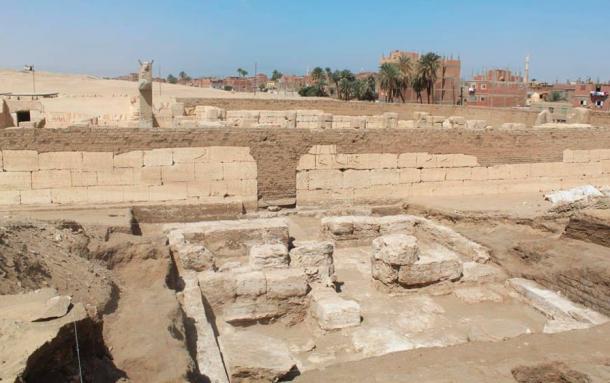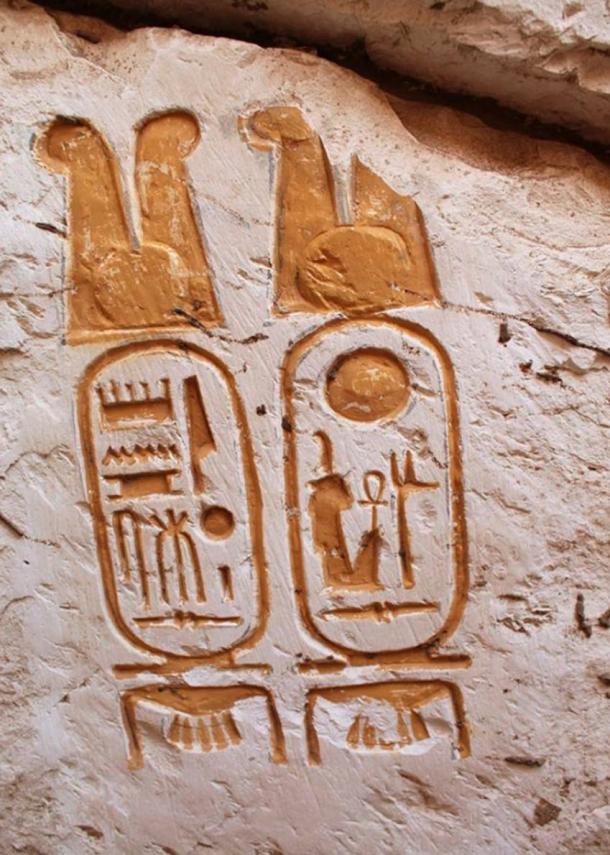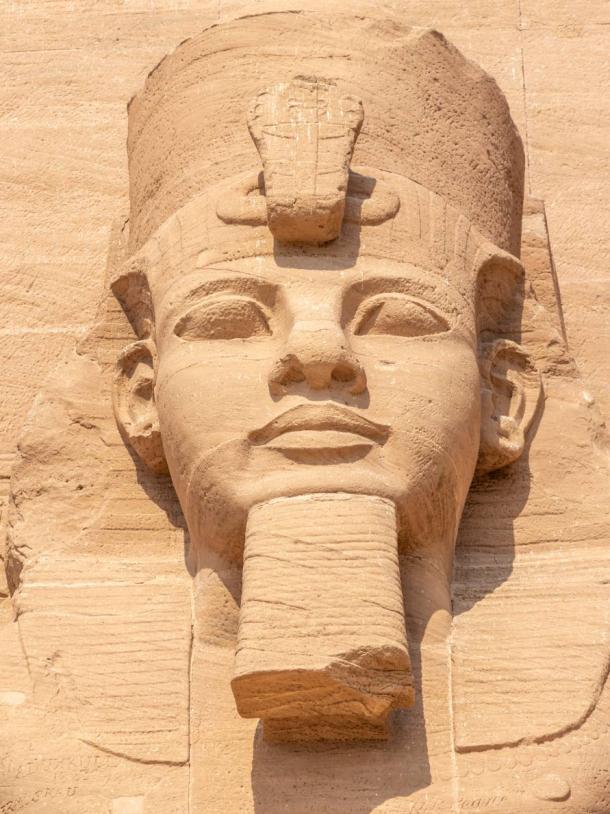An amazing discovery has been made at the ancient site of Abydos in Egypt. American experts believe that they have uncovered a Royal place that was once home to one of the greatest of all the Pharaohs, Ramesses II . There are hopes that the discovery of the palace will greatly add to our knowledge of the ancient city and also the reign of one of Egypt’s greatest rulers in the New Kingdom era (c1560-1060 BC).
Egypt’s Ministry of Antiquities announced that the palace was discovered by a team of American archaeologists. They are from the University of New York and have been researching Abydos for some time.
Abydos is one of the most ancient cities in Ancient Egypt and is 300 miles (550 km) south of Cairo to the west of the Nile and was an important cult center, especially for the worship of Osiris. A great temple was built here and many Pharaohs from the earliest periods were interred in a nearby necropolis.

The newly-discovered palace ruins belonging to Ramesses the Great. Credit: Egyptian Ministry of Antiquities
Palace Unearthed
While working on the site of a funerary temple in Abydos, the team found evidence of a stone walkway before a door and they immediately concentrated their attention on this area.
They unearthed a structure which completely surprised them as they believed that the site had been thoroughly mapped in the past. When they examined the entrance to the structure for hieroglyphics they found a cartouche, ‘a hieroglyphic marking that denotes royalty’ reports Newsweek.
They had found the cartouche of Ramesses II and it seemed that they had unearthed a lobby to a Royal Palace.

Cartouche found at the palace site identifying Ramesses the Great. Credit: Egyptian Ministry of Antiquities
A Great Pharaoh
Ramesses II is often known as Ramesses the Great and was a member of the 19 th Dynasty. He is often considered the greatest ruler of the New Kingdom period.
Ramesses II was a great conqueror and campaigned from modern Sudan to Syria and made Egypt rich from his conquests.
This monarch ruled according to some sources for 66 years (1279-1213 BC).
Ramesses, whose mummy is on display in the Cairo Museum, is believed by many to be the ruler recorded in the Bible who refused to let the Hebrews leave Egypt.
Palace Revealed
After some further excavation, the team found a large hall and here are a number of hieroglyphs that confirmed the building’s connection with the great Ramesses. According to News Details the, ‘hall consisted of walls made of limestone, bricks, and limestone covered with limestone tiles’.
The base of a column was also found which bore an inscription of Ramesses II and cornerstones which were also engraved with more royal symbols in a second hall. Some blocks that had once been part of the rooftop were also identified and they had stars engraved on them.
There were further discoveries made inside the palace. According to the News Details website, the American and Egyptian team found ‘the stones of the inauguration and the establishment of the temple’. One of these stones was inscribed with a sun disk and other symbols related to Ramesses II. This indicated that he had built the temple adjacent to the palace at some point during his reign.

Abu Simbel, the Great Temple of Ramesses II, Egypt (Alfredo / Adobe Stock)
The History of Abydos
The find is helping us to understand the history of the site in Abydos. It appears that Seti I , started the great funerary temple and it was finished and inaugurated by his son Ramesses II, who also added the palace.
There are other examples of palaces being built next to temples in the New Kingdom period. Newsweek quotes Professor Joann Fletcher King, as stating that ‘Ramesses III’s Luxor funerary temple is accompanied by a royal palace’’.
The temple of Abydos was first investigated over 150 years ago and its floor plan and design had been mapped. Newsweek quotes the head of Egypt’s Supreme Council of Antiquities, as stating that the discovery will ‘change researchers’ floorplan of the temple for the first time in roughly 160 years’’.
This discovery is changing the way that experts view temples from the New Kingdom period. The Egyptian Ministry of Antiquities Facebook page reports that the find ‘will also add to our knowledge of the planning and form of temples’ during the 19 th and later dynasties.
New Insights
The discovery of the Palace adds to our knowledge not only of Abydos but also Ramesses the Great. It indicates that he spent a lot of time here and it was at times the de-facto Royal capital just as it had been under his father.
The implication is that it was not purely a religious and cultic site but was probably also a political and administrative center.